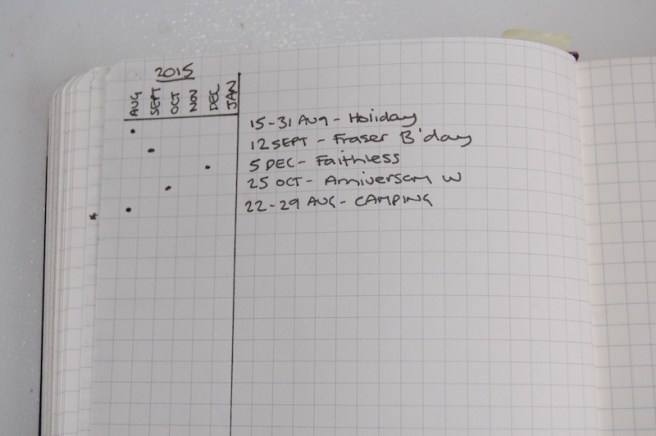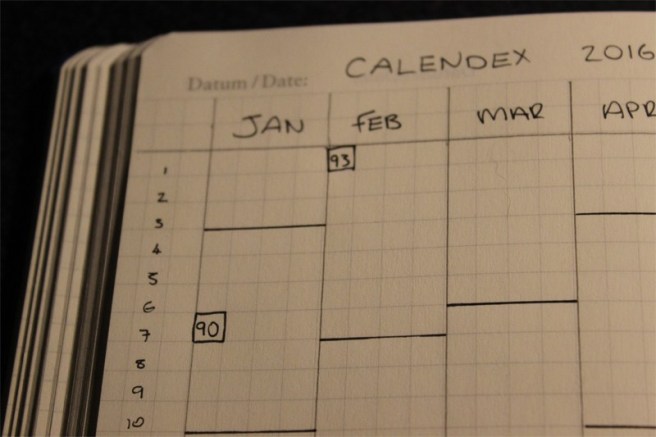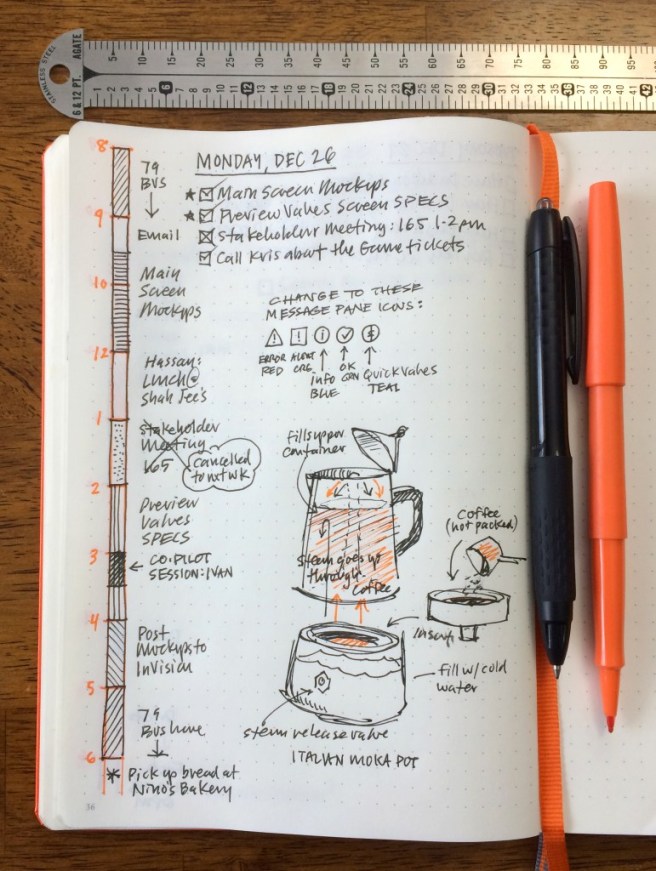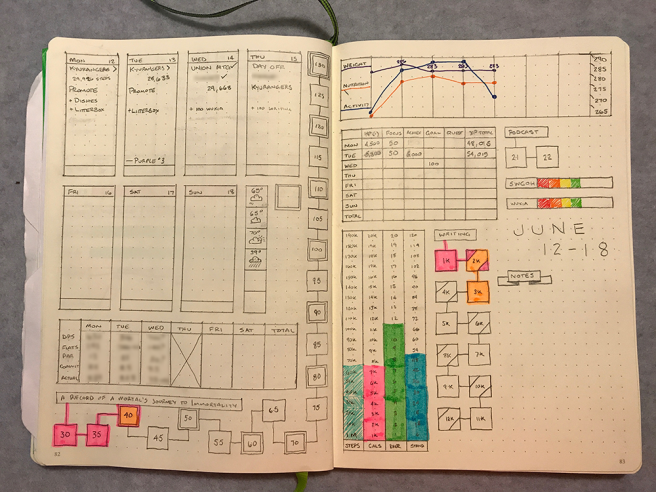Welcome back to the four-part series about the Bullet Journal, a method of keeping yourself organised with the use of a simple notebook and a pen. Last time I talked about the basics and core principles of this versatile tool. Today I’d like to talk about some of the ways people have modified the system to make it work for them.
Part of the beauty of bullet journalling lies in its versatility. As you’re using a blank notebook, you can easily change what you do and how you do it – unlike with the pre-printed planner, you are not committed to a set way of writing things down for the next 12 months! You are free to try various ways of setting up your pages. And more importantly, you can add extra kinds of pages or sections to precisely meet your planning needs.
Weekly pages or spreads
Many bullet journal users miss the visual element of a traditional week-to-view planner, but don’t like the limitations it imposes. Using the bullet journal means you can try drawing out a range of layouts to see what best suits the way you think and work.
Monthly calendar layouts
Similarly, many bullet journallers prefer the visual aspects of a monthly calendar to Ryder Carroll’s simple monthly log. Again, using a notebook leaves you free to draw out whatever layout you think will suit you best. You can also combine this with lists or trackers, such as outlining your priorities for the month.
Trackers
Another way you can use your bullet journal is to keep track of things you do. This works well for recurring tasks, especially ones you do daily. Noting down when you’ve done your daily task can help create a new habit. You can even use trackers with the ‘Don’t break the chain’ method I’ve talked about before.
Alternatively, you can track things other than your recurring tasks. A lot of bullet journal users create trackers for their mood, or for the weather – you really can track anything you like!
Alastair method
Devised by Alastair Johnston, this is a way of quickly logging future events, without the need for a drawn-out Future Log.

You can read Alastair’s description of the method here.
Calendex
As the original bullet journal setup was limited in terms of planning out future events, Eddy Hope designed a calendar-index hybrid christened ‘The Calendex’. It’s a way of keeping track of event details within a basic calendar, without needing to write out the details multiple times.

Instead, you just note the page number for your event information on the calendar, enabling you to look up the extra information you’ve noted elsewhere in the notebook. You can read Eddy’s description of the method here.
Daily plan bar
Thanks to its versatility, the bullet journal can incorporate a variety of productivity tools. If you like to plan your day in detail, you can keep track of your time blocking in your daily log.

Mike Rohde explains how he does this here.
BuJo RPG
Sometimes trying to plan and get your life in order can seem immensely uninteresting, especially once you get past the initial thrill of a new notebook and have to actually use your system daily to stay on top of everything. Research shows that many people find that turning boring tasks into a game makes you more likely to carry them out, which can help build healthy habits. DJ Allen came up with a way of doing this in a bullet journal, and has been using it to track his self-improvement journey.

The basic idea is that by using your bullet journal, you earn points, which eventually add up to achievements. This encourages you to keep using it, which keeps you more productive. You can read DJ Allen’s explanation here.
Over to you! Have you already tried any of those extras? Do you have your own ways of making the system work for you? Let us know in the comments!



